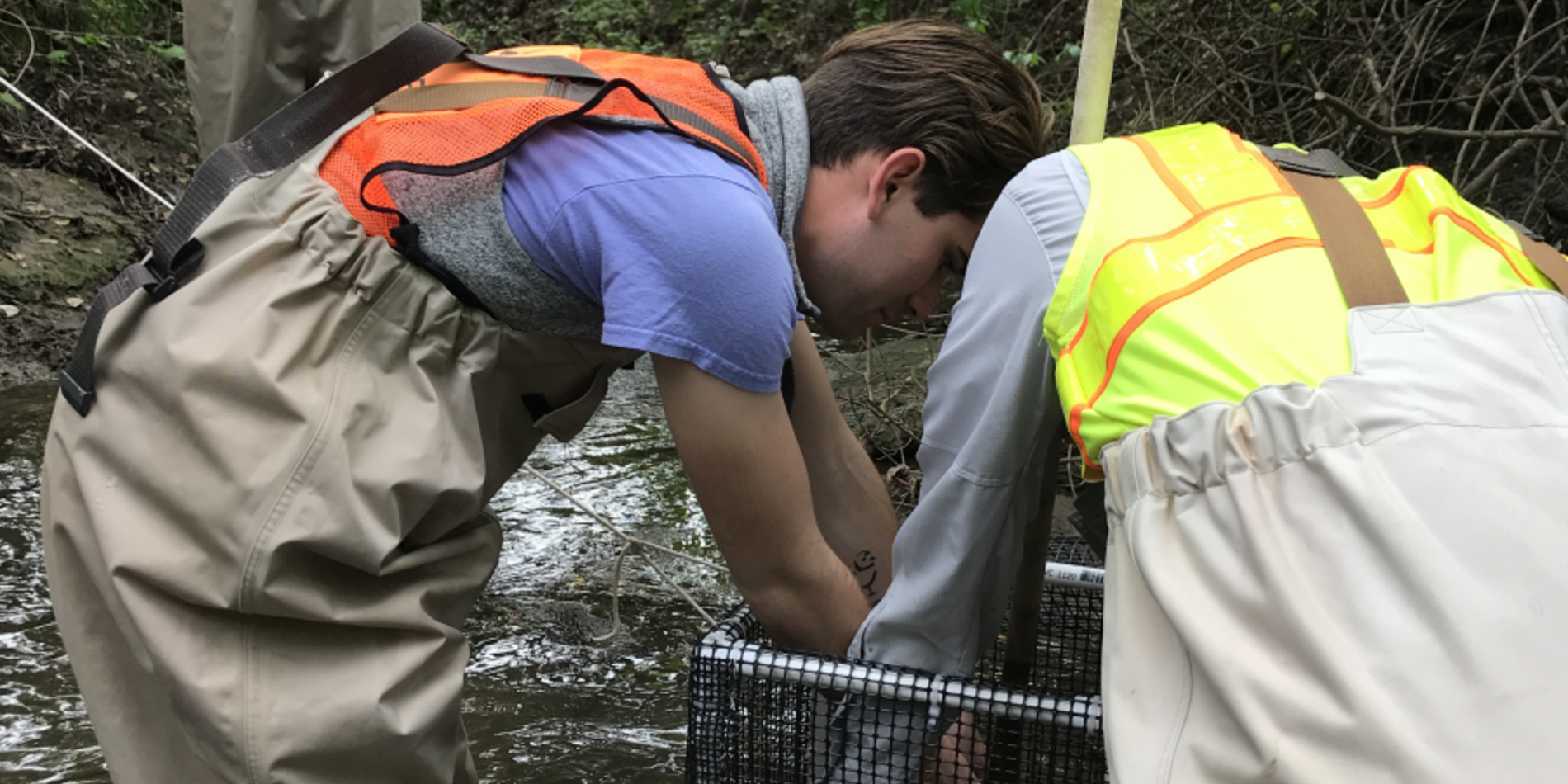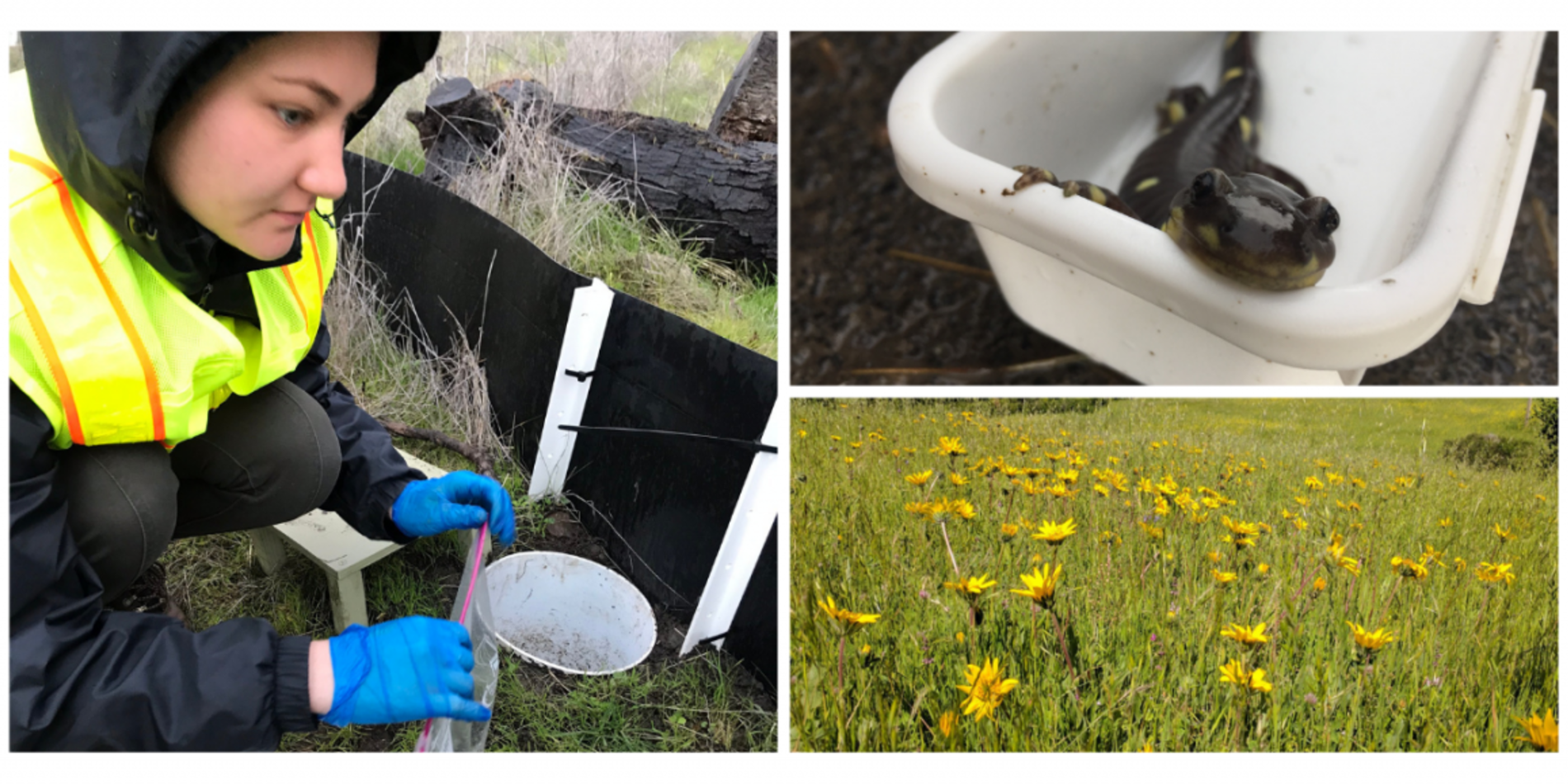Despite Challenges, Threatened California Red-Legged Frogs Reproduce in Stanford Creeks
In the first weeks of spring, California red-legged frogs (Rana draytonii) emerge from subterranean refugia to warm their cold blood in the sun and lay eggs in deep, still pools of water with plenty of good hiding places. Some California red-legged frogs travel distances greater than two miles over land in search of suitable homes, but even their impressively long and spotty legs have been challenged by habitat loss. This species’ current classification as threatened under the federal Endangered Species Act is justified by a combination of factors including low habitat availability, introduced predators, and disease.
Here at Stanford, the consequences of habitat loss for red-legged frogs are realized in a lack of ideal breeding habitat. Freshwater ponds of suitable hydroperiod are typically free of both sporadic currents and inhabitants that prey on eggs and larvae. However, due to low availability of breeding ponds, local reproductive activities are relegated mainly to wooded creeks prone to flash flooding and populated by predaceous fish, amphibians, and invertebrates. Despite these obstacles to successful reproduction, a population of California red-legged frogs has persisted on Stanford’s Matadero and Deer Creeks for several decades. Unfortunately, the species disappeared from Stanford’s San Francisquito Creek System in the early 2000s. The frogs’ unique use of available habitat features, including streams and an abandoned gravel quarry, offers a special opportunity to better understand the natural history of the species.

A California red-legged frog egg mass observed in the field. (J. Holback)
Unstable population dynamics of the species on Stanford’s lands related to the limitations of creeks as breeding sites underscore the need for conservation intervention. Erratic weather patterns can combine with high predation pressure to create exceptionally difficult conditions for egg and tadpole survival. If the rains start, then stop, then start again, the frogs’ delicate egg masses, held to submerged vegetation just by a bit of jelly, are vulnerable to being washed downstream into the too-salty bay when waters rise. The Stanford Conservation Program takes a variety of protective measures against this eventuality, including sheltering egg masses from strong currents with mesh cages and temporarily relocating highly exposed eggs to safer locations to wait out storms. Once the skies calm and the eggs hatch, the tadpoles will grow larger than your thumb and metamorphose into frogs in the late summer months.

